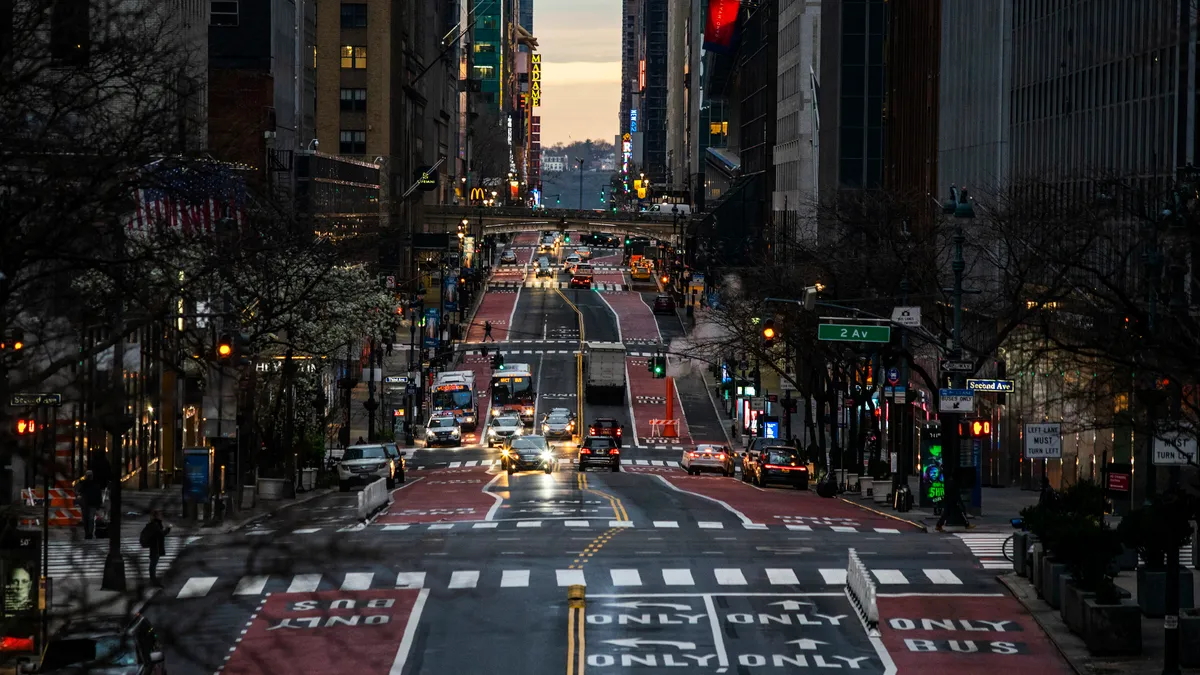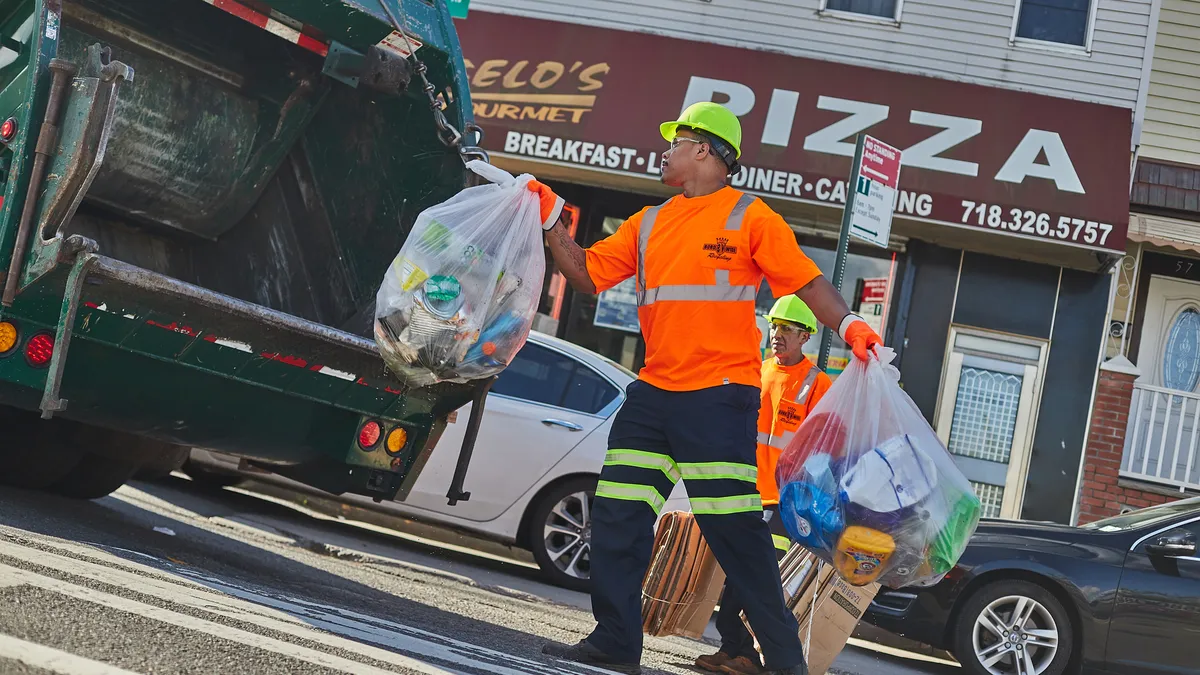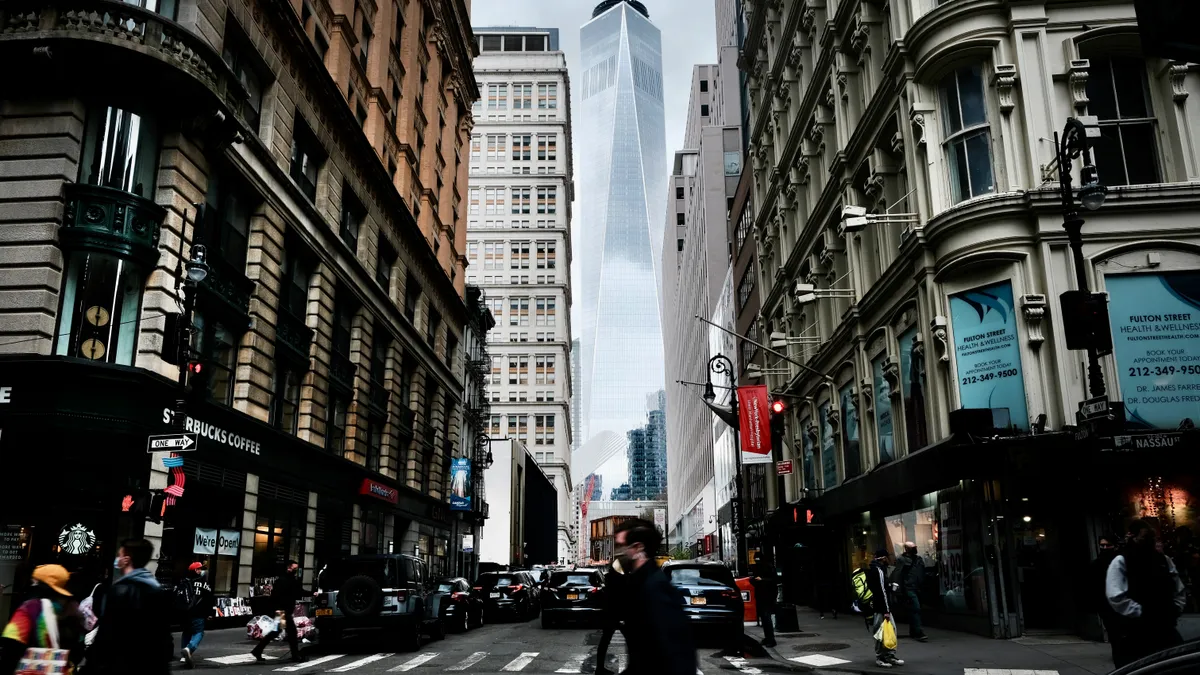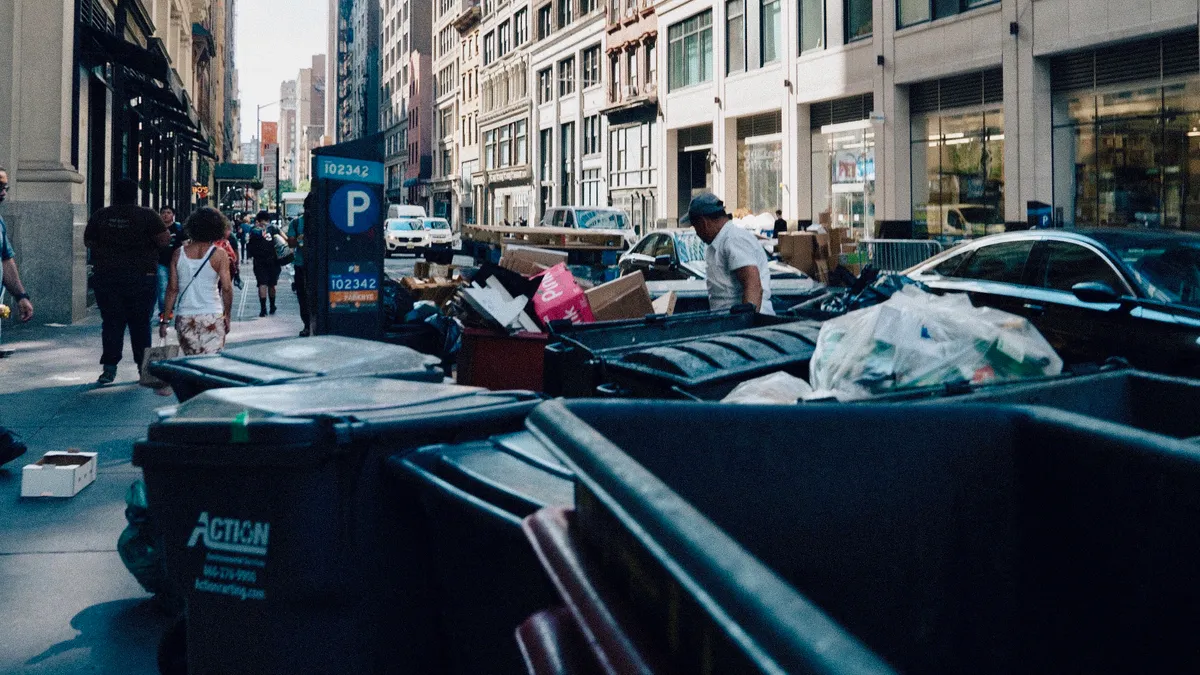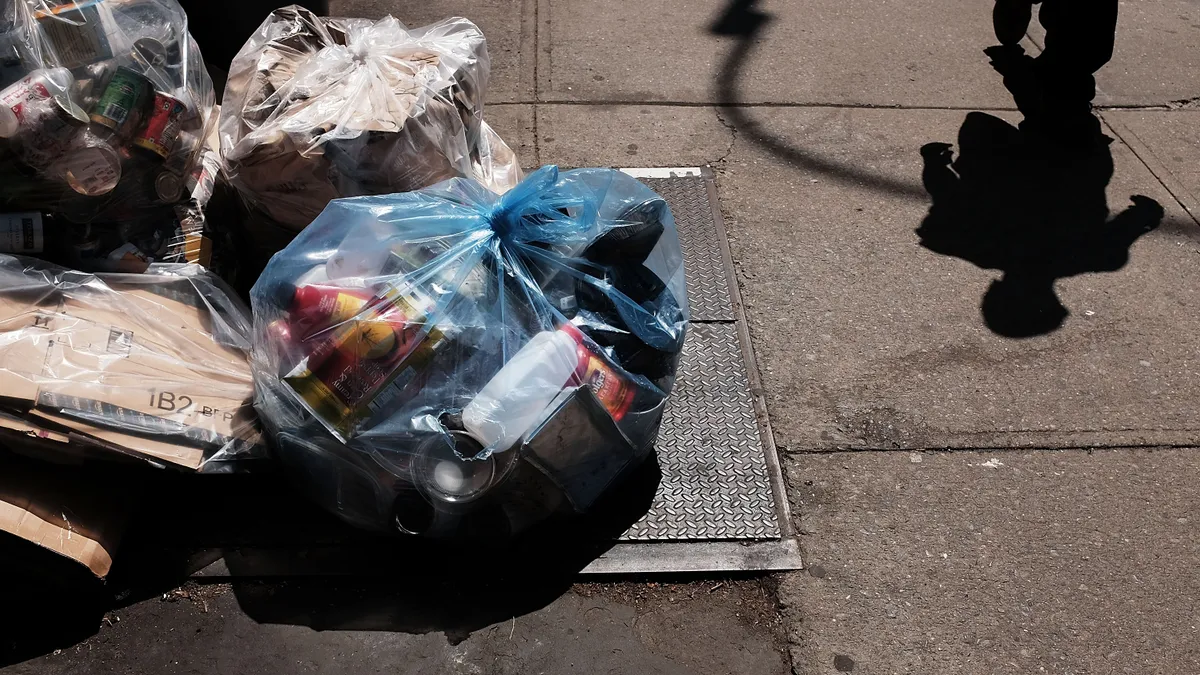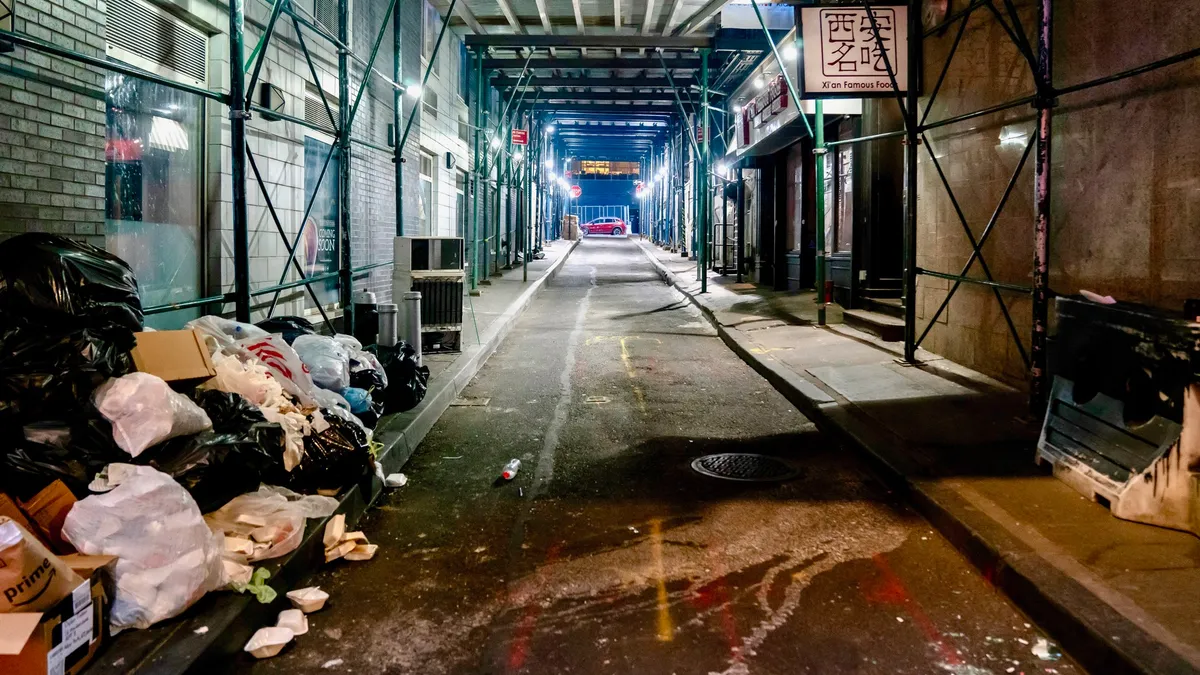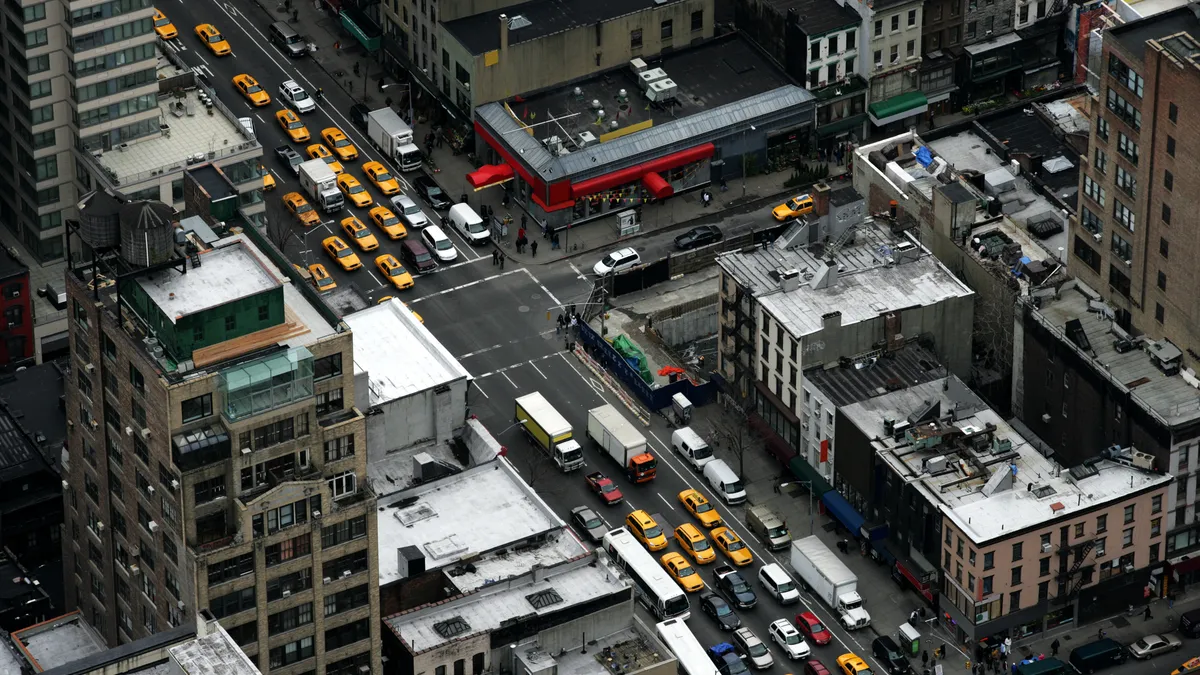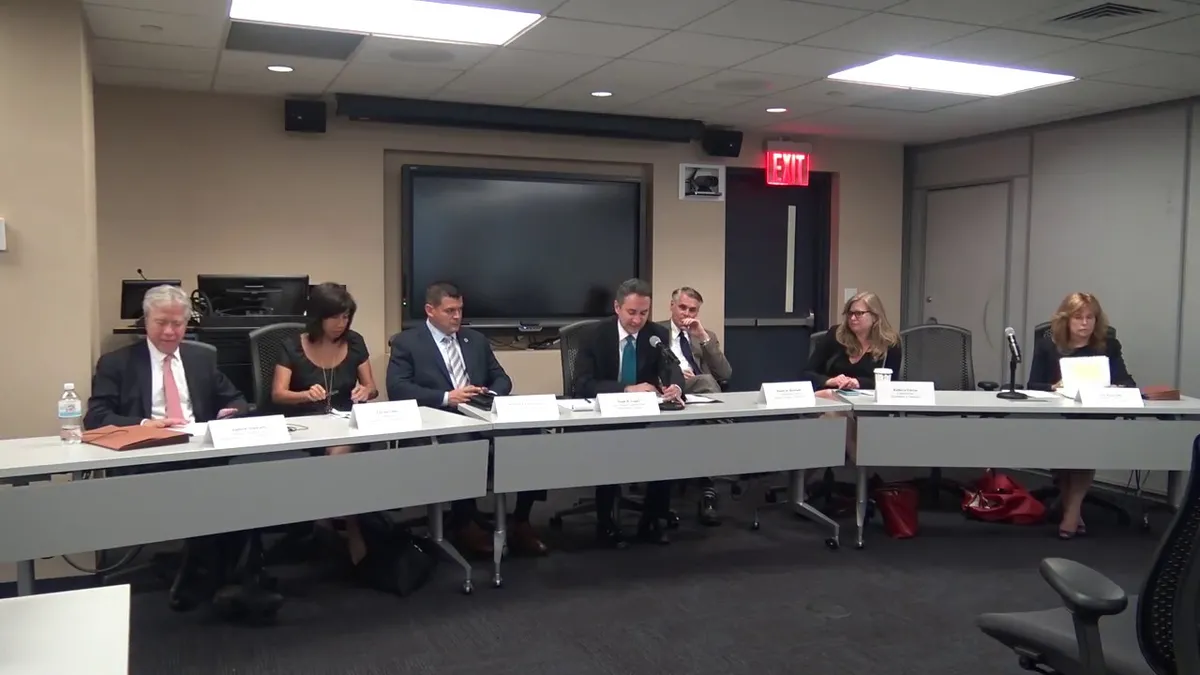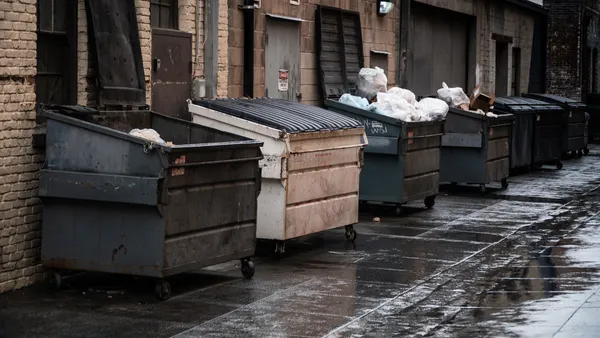New York’s commercial waste haulers will soon submit bids to win coveted 10-year contracts for franchise zones. However, after years of planning for the biggest change to this market in decades, recent inflationary trends could further complicate the program’s launch.
Currently, dozens of licensed haulers operate under a rate cap to collect putrescible waste throughout the five boroughs in an open market. While New York’s Business Integrity Commission recently raised that cap by 9%, the first increase since 2018, many stakeholders say more action is needed before the new zone system takes effect. Under that system, New York will be divided into 20 zones plus five citywide contracts for containerized waste and compactors. Each zone will have up to three haulers, who will negotiate pricing — without a rate cap — to collect solid waste, recyclables and organics.
The city’s Department of Sanitation updated a pending request for proposals last month to make pricing 40% of the evaluation criteria (up from 35%), saying bidders “that offer the most competitive rates to their customers by having the lowest maximum prices” would be scored more favorably. Haulers will also be angling to make their services stand out in two other categories, “technical proposal” and “capacity and operations,” but pricing has become a primary discussion point in recent months.
DSNY also deleted prior language in the RFP that said it “strongly prefers that the rate for recyclable materials and the rate for organic waste each be at least 30% lower, relative to the rate for refuse.” While multiple local haulers said they welcomed that move, the other revision has elicited more complicated reactions.
Some are concerned that the largest prospective bidders — national and regional players that own transfer and disposal assets — may come in with lower initial rates. Local companies that aren’t vertically integrated, and those that own a transfer station but not a landfill, say they’re already seeing sizable increases in disposal costs due to rising rates and new fuel surcharges.
When asked whether inflation could affect the initial goal of offering commercial waste zone customers better service at a comparable or lower cost, DSNY disagreed with the premise.
“Inflation and CWZ are not related. Inflation is causing prices to rise everywhere, and commercial waste zones will not undo inflationary pressure. DSNY’s expectations are that CWZ should not lead carters to increase their prices, and our environmental review showed that overall costs in the industry should actually decrease as a result of the collection efficiencies created by commercial waste zones,” said Joshua Goodman, assistant commissioner for public affairs, in a statement.
DSNY estimates that this system could lead to as much as a 50% reduction in vehicle miles traveled, which in turn could reduce certain operational costs. The city’s 2019 environmental impact statement found that disposal costs constitute the largest share of hauler expenses, followed by payroll, trucks and equipment, and other expenses. The analysis estimated haulers would see reductions in expenses for payroll, trucks and equipment under more efficient routing in a zone system.
Much has changed since then: The pandemic has resulted in significant volume shifts, operating costs have risen and some haulers are intentionally reconfiguring routes to focus on areas where they plan to compete for zone contracts. DSNY believes its 2019 assessment is still accurate, however, and expects haulers will see operational savings for “fuel cost, labor cost, and maintenance and depreciation” by having better route density in more focused geographic areas.
“As the costs of these functions increase, the potential savings are even more greatly amplified,” said Goodman. “The commercial waste zones program will give carters more control over these costs than in the present-day open market.”
Some local industry experts agree there could be operational savings in certain scenarios, depending on how zones are awarded and who is servicing them, but a trade group representing the largest bidders is skeptical.
“A lot has happened since 2019,” said Lew Dubuque, vice president for the National Waste & Recycling Association’s Northeast region. “Those route efficiencies that the [environmental impact statement] says they’re going to get are, frankly, unlikely.”
David Biderman, CEO of the Solid Waste Association of North America, said he’d heard a mix of reactions about the pricing updates, though haulers were pleased the recycling discount recommendation was removed.
“I think that [this change] is intended to encourage carters to bid aggressively on price because some city officials may be concerned about sticker shock that customers may face in 2023 or 2024, when commercial waste zones are implemented,” he said. “That isn’t the only factor that the department’s going to be considering, and I think there is a general expectation that the cost of waste removal for commercial customers is going to increase as a result of the commercial waste zone system.”
Long-running debate
Some type of cost increase has long been considered a possibility with the implementation of franchise zones, even before the pandemic, but proponents say the system’s anticipated sustainability, labor and service benefits would justify that outcome. A 2016 study found that “New York City customers generally pay less than many other major U.S. cities for their waste collection,” and the city is considered unique in setting a specific maximum rate.
This process is a vestige of organized crime reform efforts in the 1990s, which gave an agency now known as BIC the authority to license haulers and assess the rate cap every other year. Haulers have long called for the city to scrap the cap entirely.
During a September rate cap hearing, representatives from Action Environmental (an Interstate Waste Services subsidiary) and Waste Connections, along with local haulers Mr. T Carting and Liberty Ashes, urged BIC to make a substantial rate increase. They cited numerous pressures since the last increase in 2018: the pandemic, rising wages, fuel costs (which have continued to rise), local vehicle emissions requirements, higher tip fees and more. Tip fees at local transfer stations are not covered by the city’s rate cap.
At an April 28 hearing, industry representatives made similar comments. NWRA’s Dubuque said the 9% bump was appreciated, but “far from enough.” Instead, he called for a 12% increase, followed by another 5% increase in January 2023. Andy Moss, Northeast division government affairs manager for Waste Connections, said BIC’s proposed increase “pales in comparison” to industry costs that may have risen as much as 20% in recent years.
“We understand that the BIC is trying to balance the needs of the greater city versus the true cost incurred by waste and recycling companies, but essentially the city is asking us to subsidize the rest of the commercial sector,” he said. “It’s not equitable, and it’s not fair.”
When asked whether the recent change (which brought maximum rates up to $22.63 per cubic yard as of last week) adequately accounts for inflation, the agency said it did — but it also left the door open for additional increases.
“While the next required rate cap hearing will not occur until 2023, trade waste carters and their customers may present relevant information to BIC at any time,” said Nicole Mathias, the agency’s director of policy, in a statement. “BIC may consider any relevant factor affecting the trade waste industry or its customers and, if there are compelling reasons to adjust the rate cap before the next mandated hearing, BIC can take appropriate action pursuant to New York City’s rulemaking process, which includes a public hearing and an opportunity for comment by any interested parties.”
Biderman said SWANA has engaged with city leadership multiple times on this issue and hopes BIC “will consider an additional adjustment in early 2023.”
What’s next
The theme from major industry companies during first-quarter earnings calls and last month’s WasteExpo was that their pricing is going up around the country, with more to come. But some local New York stakeholders are concerned that larger companies might take a different approach for these particular contracts.
“If we’re going to have contractors come out here and low-ball just to get a piece of the franchise, workers aren’t going to benefit from that,” said Mike Hellstrom, secretary treasurer of Laborers Local 108. “Our contractors are being required to bid on something where you know the max, we’ll let you guess what the minimum is.”
Local 108 is advocating for legislation to establish a minimum price for the zone system, citing examples of smaller “bottom feeder” carters currently charging well below the rate cap, but the text not been formally introduced.
The office of New York City Council Member Sandy Nurse, who chairs the council’s sanitation committee, has not responded to interview requests about the zone system.
DSNY plans to evaluate bids based, in part, on the lowest maximum rate, and it also reserves the right to negotiate bid proposals with potential awardees. A June 22 RFP addendum specified that “proposers should provide pricing under the assumption that these prices would be in effect for Year 1 of CWZ implementation (mid-2023 to mid-2024).”
Another factor, among many, that could affect this calculation is whether bidders that don’t own transfer or disposal sites can use DSNY’s marine transfer station network. The city’s 2006 solid waste management plan envisioned these newer sites accepting commercial waste, and the agency has asked bidders to specify their potential interest in doing so. While those tip fees are estimated to be at least $20-$30 per ton more than private sites — according to comments at an April council hearing — observers believe there could be value for bidders that win a zone near one of the marine transfer sites or that don’t want to utilize a competitor’s site for disposal.
Bids from the 50 companies deemed responsive to the RFP’s first round are due by July 15, following multiple pandemic-related delays.









